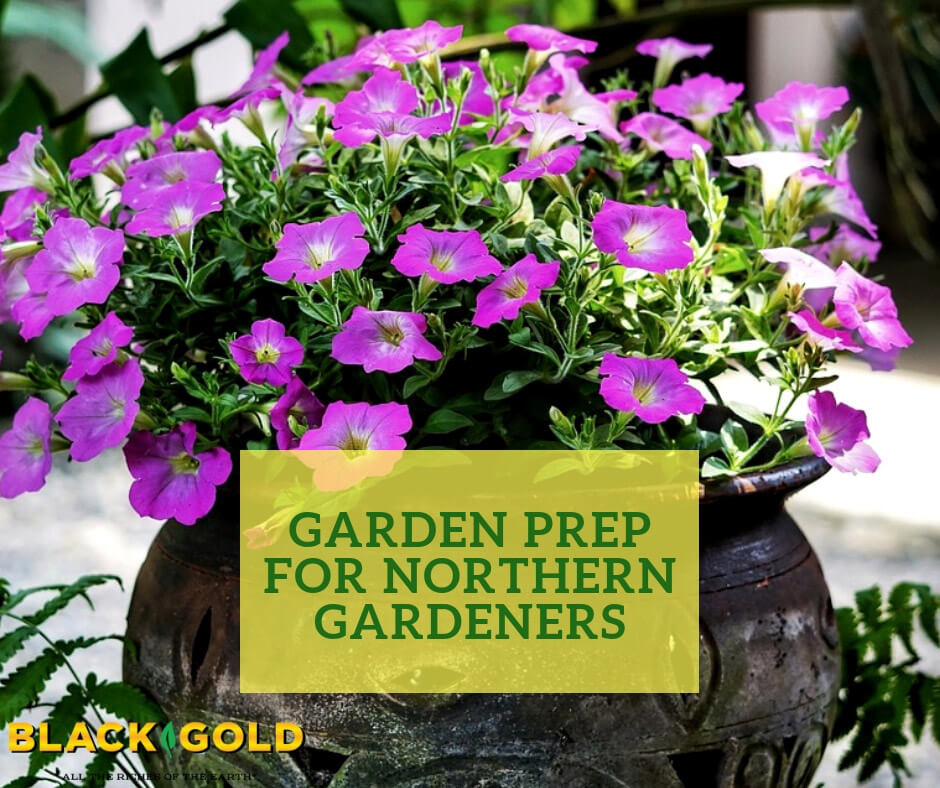“What needs to be done in the garden to prep for winter? Only in Wyoming for two years, and I have container gardened because I didn’t have land.” Question from Susan of Basin, Wyoming
Answer: Garden and container garden prep for winter depends on what you are growing, but there are a few steps you will want to follow, especially in really cold-winter climates like yours (USDA Hardiness Zone 4). But here are some general rules for pre-winter prep for gardens and containers.
Winter Prep for Gardens
Pre-winter garden prep is pretty simple. Here are the steps I follow:
1. Remove all dead and dying vegetables and bedding annuals
2. Rake away all fallen annual, perennial or veggie leaves from beds to reduce the chance of overwintering pests and diseases
3. Consider planting a winter cover crop over vegetable beds (winter rye, winter wheat, Austrian winter peas, and crimson clover all make great winter cover crops).
3. Prune off any dead or dying stems or branches from perennials, trees, and shrubs (Be sure to leave perennials that look pretty through winter, like ornamental grasses and cone flowers.)
4. Edge and mulch beds to protect overwintering perennials and keep beds looking pretty through winter (Click here for an edging tutorial.)
5. Plant spring flower bulbs (flowering bulbs like tulips, daffodils, crocus, etc, as well as edible bulbs like garlic, shallots, and winter onions)
6. Cover any marginally hardy shrubs, like prized roses, using the same covering method recommended for perennial containers (below).
I also like to collect, chop, and compost tree leaves that fall in my yard. Chopped leaves make excellent mulch and compost that breaks down quickly and adds lots of needed organic matter into garden beds.
Winter Prep for Annual Containers
If you only grow annual pots, simply cut back the old plant material and place containers under an eave or in a garage or covered storage area where they will stay dry through winter. Winter freezing and thawing of moist container soil will cause Terracotta or ceramic pots to crack and shatter. Exposure to harsh winter weather will also cause resin and plastic pots to visually age more quickly. Another pot-maintenance option is to remove their soil entirely and leave them dry and empty. Soil that is just one year old can be bagged and saved for use the following spring, just be sure to replenish pots with at least 50% fresh soil to ensure good plant performance. (We recommend Black Gold Natural & Organic Potting Mix, which is OMRI Listed for organic gardening).
You can also bring some annuals indoors. Begonias, coleus, and geraniums, can all be brought indoors as winter house plants. They key is cleaning them first to make sure they are pest free. Start by spraying their leaves with water, let them dry, spray them again with insecticidal soap, and then bring them inside. It also helps to remove and replenish the top 2 inches of potting soil to catch any pests hanging out in the upper soil layers. Though winter, care for them as you would any house plant, and trim them back if they become too large. (You can even take cuttings of them in spring to add to your container collection, here’s how!)
Winter Prep for Perennial Containers
Perennial containers have different care requirements. (I will assume that your potted perennials are established and hardy to your region.) The fact that their roots are raised makes them far more vulnerable to freezing, so it is important to provide them with extra protection.
Wait until plants are fully dormant, then clean up any fallen foliage on the pot’s soil surface and prune back any dead or dying top growth. Once clean, place pots in a protected spot outdoors (under a house eave, covered porch, or in a garage or storage area) where they will be shielded from the harsh winter elements.
I also recommend covering pots with a thermal covering. My favorite method is to cover the pot surface and exterior with a thick layer of straw and surround with a burlap bag or wrapping secured with a bungee cord or burlap twine. Once spring weather warms, you can uncover the pots and refresh their potting soil and fertilizer for great growth in the new season.
Happy gardening! Jessie

